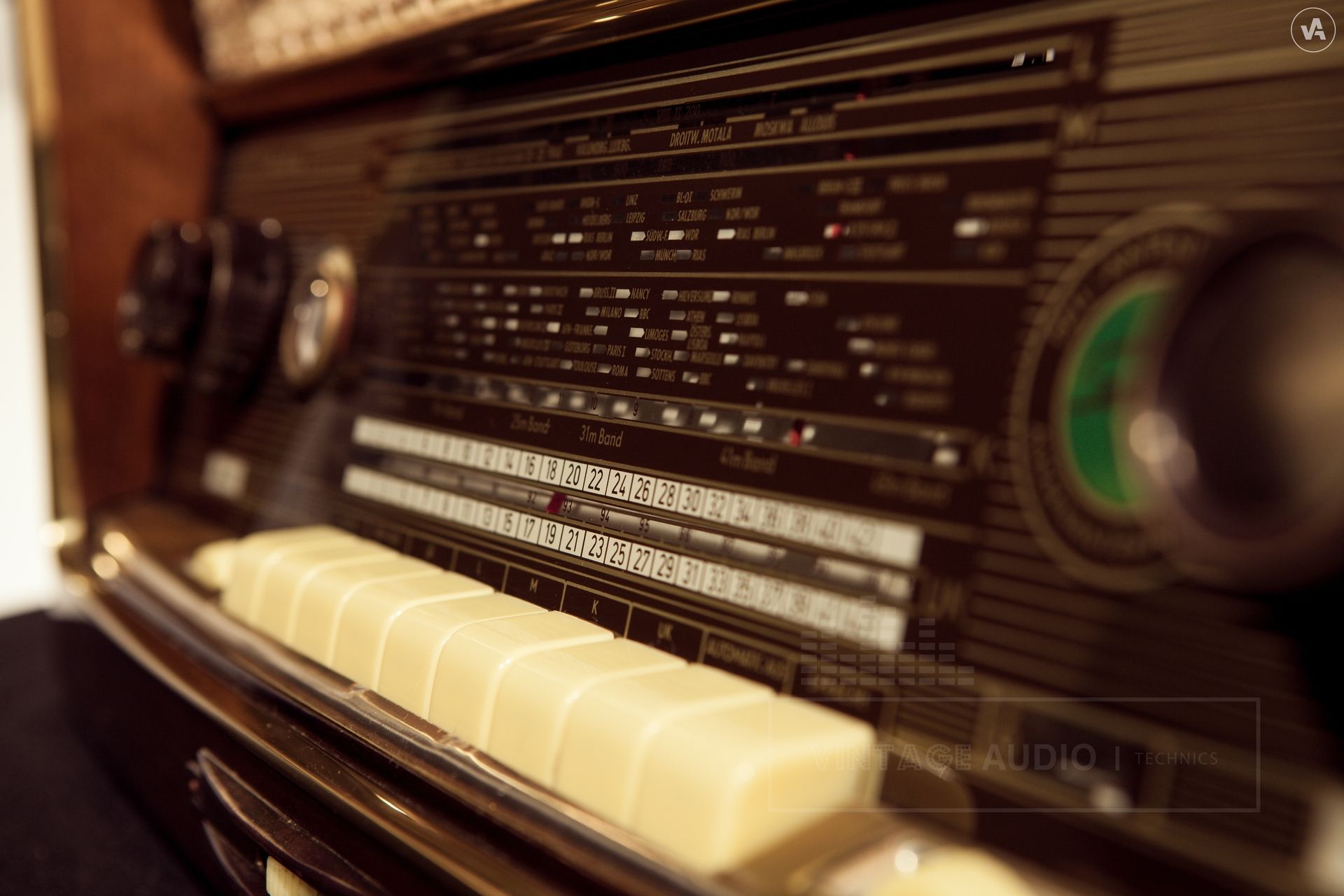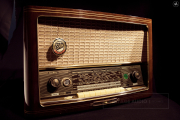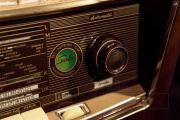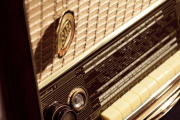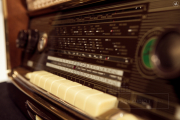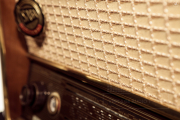It is a super-heterodyne receiver, able to receive long waves, broadcast, short waves (the latter ones are not subdivided into multiple bands) and frequency modulation (88 – 100 MHz; unluckily it doesn’t reach 108 MHz since probably using the upper portion of the FM band were not allowed at the time). Two separate pointers on the dial correspond to the two different methods of modulation; also the movements of the indicators are unconnected. Since there is a single tuning knob (which is connected to the automatic tuning motor), a system of clutches that switch between AM and FM, i.e. allowing the movement of one of the two pointers only, according to the wave band selected (FM button or one of the three AM bands).
It is already evident that Saba could distinguish itself from other radio manufacturers: together with the alignment, with Saba IF transformers there is the possibility to adjust the degree of coupling of the coils, by meaning of coupling screws, allowing the adjustment the selectivity curve in order to obtain maximum selectivity from the receiver without compromising the band-pass curve, which would have cut higher audio frequencies. This is a technical feature which is extremely rare to be found in civil receivers, and confirms the complexity and accuracy of the design of these radios (which, on the other side, make them very difficult to service). The radio has an internal dipole for FM reception, which is also used as internal antenna for shortwaves; its design is extremely accurate that there is a stub of a twin-lead aerial where the dipole (two aluminium sheets glued on the wooden case) is connected with the transmission line (a 300 ohm twin-lead antenna) in the upper part of the case. This was done in order to adapt the impedance of the aerial to the transmission line.
There is an adjustable internal ferrite antenna for broadcast and long waves. The AM ferrite rod can be rotated by a metal wire from the knob which is coaxial with the volume knob. A complex system of electrical contacts allows switching another coil when an external antenna is used, or to light a lamp behind Saba logo when the adjustable antenna is used instead. The audio frequency section consists in a preamp penthode and a single ended EL84 output tube. Volume controls is done via audio taper potentiometer, there are two tone controls (bass and treble), and two different pre-set equalizations, “speech” and “music” (Sprache e Musik), which can be selected with two buttons on the front. Due to several sets of contacts being operated with these controls, these are operated via relays, not directly through the buttons.
Finally, 4 loudspeakers are used as output, two for intermediate and bass tones and two tweeters. A switch allows the selection of internal or external loudspeakers, or both, adjusting the impedance accordingly.
Technic details
Specifications
Type: | Broadcast Receiver, 10-lamp apparatus equipped with a magic eye |
Main principle: | Superheterodyne ZF/IF 460/10700 kHz |
Tuned circuits: | 8 AM circuit(s) / 11 FM circuit(s) |
Wave bands: | Broadcast, Long Wave, Short Wave plus FM or UHF |
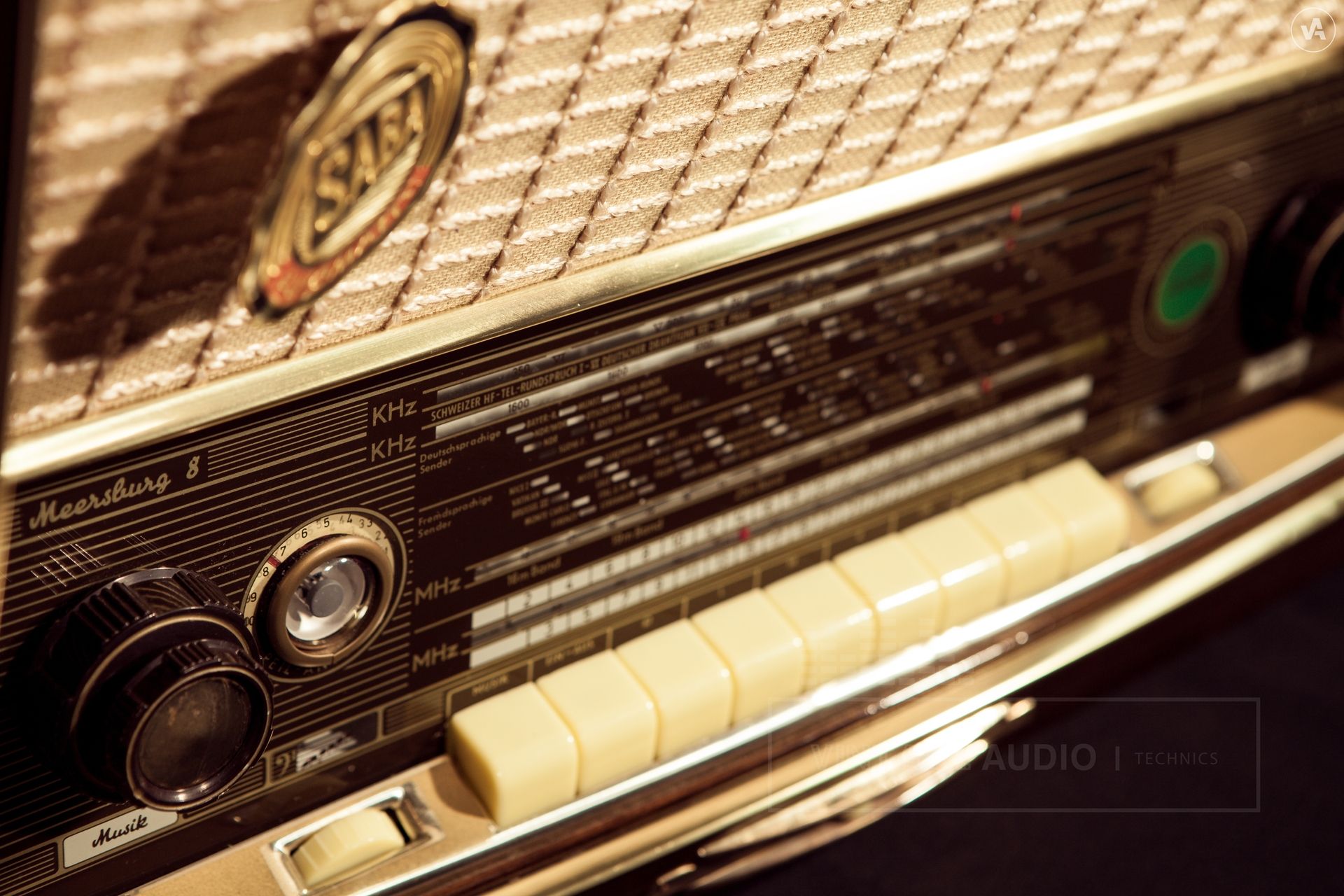
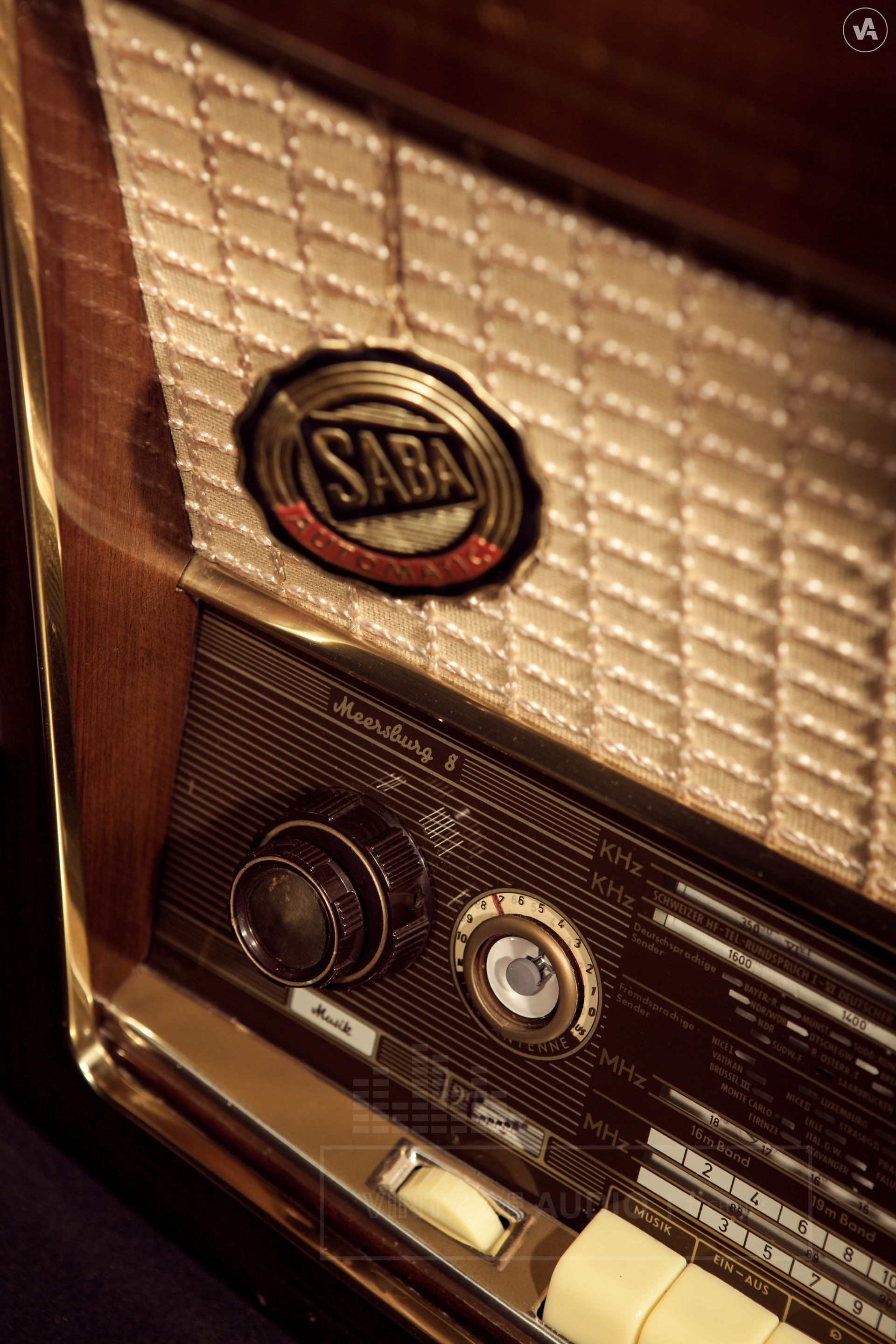
Shape: | Horizontal |
Dial: | square or rect. |
Buttons: | 2 + 2 |
Loudspeaker: | 2 x 20cm, 2 x 11cm, Permanent magnets |
Power out: | 6W |
Set of lamps: | EC92, EC92, ECH81, EF89, EBF89, ECL80, EABC80, EF86, EL84, EM34 |
Semiconductors: | Diodes - RL232, RL232 |
Keyboard: | 9 + 1 keys |
Features: | Automatic station search Receive frequency auto tuning Bass and treble controls Line In External speakers can be connected Built-in internal antennas External antennas can be connected |
Power Consumption: | 75W |
Power supply: | AC 110 / 220V |
Shape: | Tablemodel with Push Buttons |
Material: | Wooden case |
Dimensions (W x H x D): | 650 x 415 x 302mm / 25.6 x 16.3 x 11.8inch |
Weight: | 17.4kg |
Year: | 1957 |
